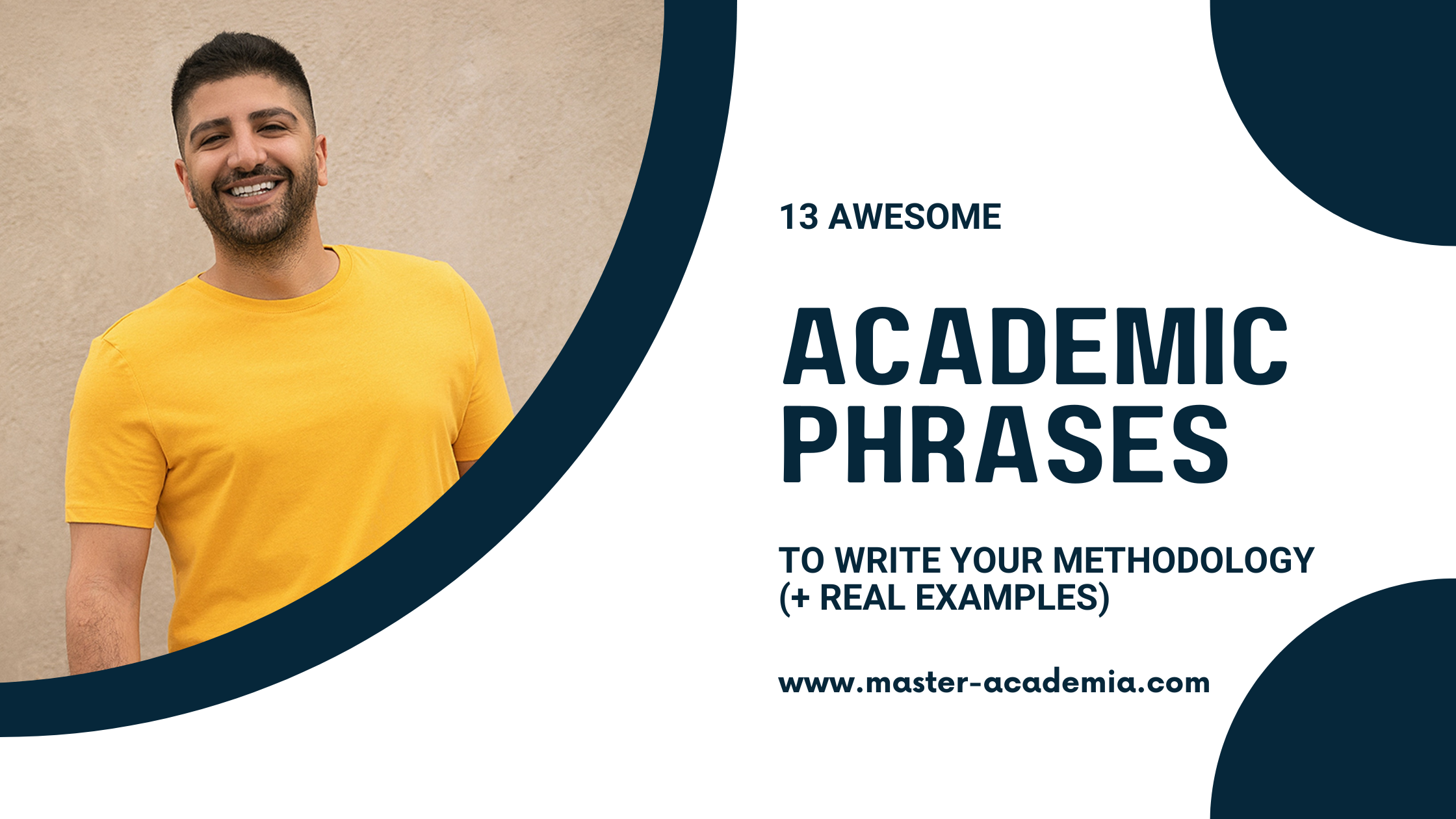
Some journals require a letter to the editor, also called a cover letter, as part of the submission process. This can come as a surprise to PhD and master’s students who are (relatively) new to manuscript submissions. Learn about the letter to the editor, what it entails, and how to structure it.
Disclosure: This post may contain affiliate links, which means I may earn a small commission if you make a purchase using the links below at no additional cost to you. I only recommend products or services that I truly believe can benefit my audience. As always, my opinions are my own.
Contents
Cover letters for journal submissions
You might be familiar with the following situation: After weeks and months of work, your paper is finally ready for submission. You are thrilled, on cloud nine.
You fought your way through Manuscript Central. You cannot wait to press SUBMIT. Almost there. Wait…whaaaaaat? Do you have to include a letter to the editor?!
Not all journals are asking for a letter to the editor. And many supervisors simply forget to mention this stage of the submission process. The result: many early career researchers are taken by surprise and are often unaware of the expectations when it comes to writing letters to the editor.
The purpose of a ‘letter to the editor’
A letter to the editor (or editors) is essentially a cover letter that accompanies your paper submission to an academic journal. Uploading such a letter is often one of the last steps to conclude before hitting the ‘submit’ button that sends off your manuscript.
Some journals have specific criteria for this letter, so make sure to check the journal website thoroughly. Most, however, do not specify what the letter should entail. There are general expectations though:
- Summarising your research: The letter to the editor/s should summarise what you did, and what your main findings are. This does not mean that you can simply copy-paste your abstract! While it is okay to copy-paste half a sentence or so, put some effort into writing a few sentences summarising your paper in simple language.
- Highlighting your original contribution: Make sure to highlight your key arguments and the originality of your research. Don’t be overly arrogant (e.g. “My cutting-edge research has made the groundbreaking discovery of…”) but also don’t be overly humble. Think of sentences such as “I believe that my findings make a valuable contribution to … by challenging the assumption that…”, or “My research sheds light on …, an aspect that has been under-researched so far but warrants attention because…”.
- Justifying why your paper fits the journal of your choice: Lastly, you should use the cover letter to explain why you selected the specific journal, and why you think the journal’s readers will be interested in your paper.
When receiving your paper, the editor might first screen the letter in combination with your abstract. Therefore, a clear and concise letter is very important! It can make a difference between receiving a desk rejection, or the editor starting the peer review process.

If you are looking to elevate your writing and editing skills, I highly recommend enrolling in the course “Good with Words: Writing and Editing Specialization“, which is a 4 course series offered by the University of Michigan. This comprehensive program is conveniently available as an online course on Coursera, allowing you to learn at your own pace. Plus, upon successful completion, you’ll have the opportunity to earn a valuable certificate to showcase your newfound expertise!
Who to address in a letter to the journal editor?
Now, coming to the nitty-gritty. Who to address in your letter? Some journals make it easy for you: They ask you to select an editor from the journal’s editorial board. In many cases, however, it is not obvious who to address.
To be on the safe side, follow these steps:
- Step 1: Go to the journal’s website and look for information on the editorial board. Usually, you will find the name or names of the editor/s in chief, as well as the editorial board members.
- Step 2: Check whether you were assigned to, or could select, an editor of your choice from the provided list of editors. If yes, address your cover letter to that person. If no, continue to step 3.
- Step 3: Try to find out if all manuscripts will first be inspected by the editor/s-in-chief. If so, address your letter to the editor/s-in-chief. There is a high chance that you won’t find this information at all. Nonetheless, it is worth checking.
- Step 4: Still unsure who is going to read your paper first? Then go for a generic: “Dear editors of …(journal name)”.
How to structure a cover letter to the journal editor
Now that you know who to address, or decided to go for a generic greeting, it is time to start writing. First of all, be formal. If you know who to address, include a proper salutation, such as “Dear Professor Dr. …“.
Now continue with something positive. For instance, that you are pleased to submit your manuscript to the journal.(Write down the journal name in full. The more specific your letter, the less it will seem like a generic copy-paste exercise). State the name of your paper, and if applicable, list all co-authors.
Then, in a nutshell, describe the content of your paper. Next up, highlight the unique contribution and originality of your paper.
And last but not least, explain how and why your paper fits the journal, and why you selected it. Some compliments never hurt. To enhance your point, you can also mention one or several papers that were recently published in the journal and that is heavily featured in your paper.
Finally, thank the editor/s for their time to review your paper. And end formally, with “sincerely” or “with kind regards“.
Length and effort needed for a cover letter to the journal editor
No editor wants to read a cover letter that is half a paper on its own. Instead, keep it brief and to the point! If you follow the structure above, write three short paragraphs. Or, another guideline would be approximately half a page. 300 – 600 words.
As stated above, the cover letter is an important element of paper submission. However, while taking it seriously, do not stress too much about it. Don’t let perfectionism become your enemy. Don’t waste, for example, half a day just worrying about the formulation of each sentence.
Put yourself a limit, for instance to 1 hour to write the letter, if it is the first time you write one.
Once you become more experienced and confident, you will write letters to the editor/s even faster. To this day, every time I have to write one, I open the last cover letter that I submitted. When you have a structure that works for you, a new letter can be written quite fast and effectively.




